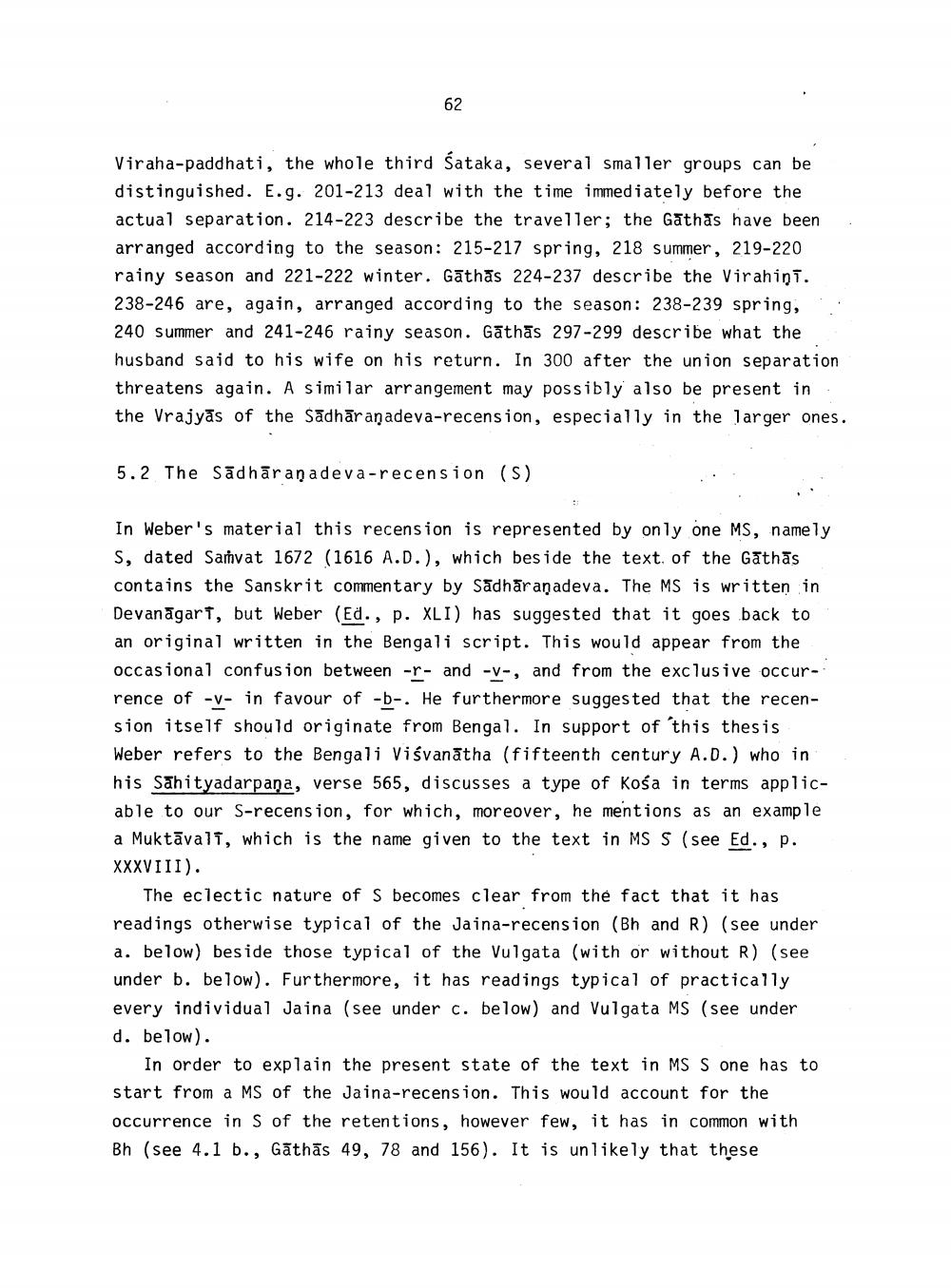________________
62
Viraha-paddhati, the whole third Sataka, several smaller groups can be distinguished. E.g. 201-213 deal with the time immediately before the actual separation. 214-223 describe the traveller; the Gathās have been arranged according to the season: 215-217 spring, 218 summer, 219-220 rainy season and 221-222 winter. Gāthās 224-237 describe the Virahinī. 238-246 are, again, arranged according to the season: 238-239 spring, 240 summer and 241-246 rainy season. Gāthās 297-299 describe what the husband said to his wife on his return. In 300 after the union separation threatens again. A similar arrangement may possibly also be present in the Vrajyas of the Sadharanadeva-recension, especially in the larger ones.
5.2 The Sadharagadeva-recension (S)
In Weber's material this recension is represented by only one MS, namely S, dated Samvat 1672 (1616 A.D.), which beside the text. of the Gathas contains the Sanskrit commentary by Sadharanadeva. The MS is written in Devanagari, but Weber (Ed., p. XLI) has suggested that it goes back to an original written in the Bengali script. This would appear from the occasional confusion between -r- and -v-, and from the exclusive occurrence of -v- in favour of -b-. He furthermore suggested that the recension itself should originate from Bengal. In support of this thesis Weber refers to the Bengali Viśvanatha (fifteenth century A.D.) who in his Sahityadarpana, verse 565, discusses a type of Kosa in terms applicable to our S-recension, for which, moreover, he mentions as an example a Muktavali, which is the name given to the text in MS S (see Ed., p. XXXVIII).
The eclectic nature of S becomes clear from the fact that it has readings otherwise typical of the Jaina-recension (Bh and R) (see under a. below) beside those typical of the Vulgata (with or without R) (see under b. below). Furthermore, it has readings typical of practically every individual Jaina (see under c. below) and Vulgata MS (see under d. below).
In order to explain the present state of the text in MS S one has to start from a MS of the Jaina-recension. This would account for the occurrence in S of the retentions, however few, it has in common with Bh (see 4.1 b., Gāthās 49, 78 and 156). It is unlikely that these




